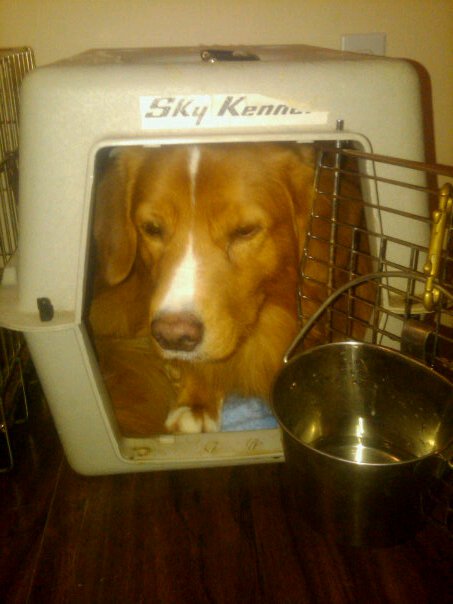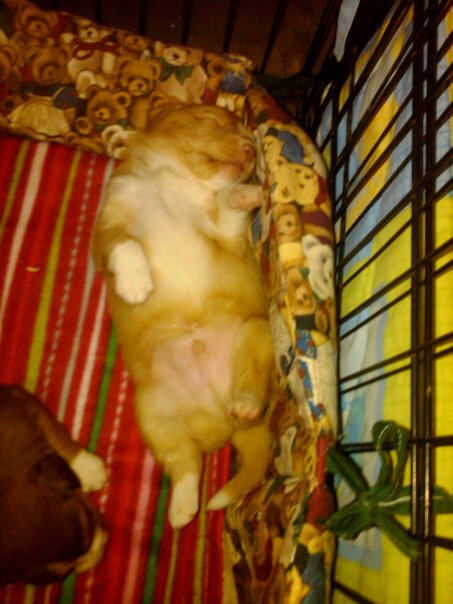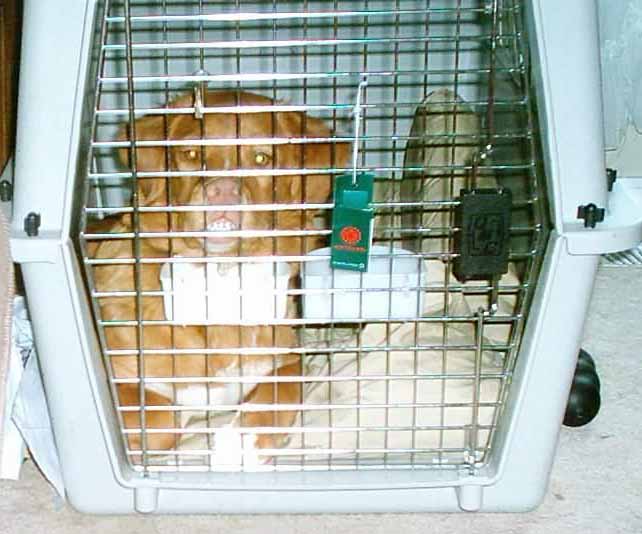How To Crate Train Your Puppy
My favorite method of crate training is to keep things simple and FUN! A crate should never be used as a punishment for a puppy. By using a crate as a punishment you are encouraging your dog to dislike being in their crate because it's a unhappy place. A crate should be a artifical den for your puppy. The idea behind crate training is to provide your puppy with a comfortable, quiet environment they can enjoy. A den to your puppy should provide the same mood as a bubble bath in a quiet room with a good book would feel to a person.
That being said NEVER let your children play with your dog in the crate and avoid going into your dogs crate with them unless necessary. How would you like it if someone jumped in your bubble bath during your quiet time?!

Some pups choose to avoid their crate because they have too much other things going on within the home they choose not to relax! Relaxation time is good for your dog and in the future you and they will appreciate having somewere they can chill. To make the crate a FUN place for a puppy I recommend making the crate part of feeding time. Puppies that stay at my home start basic crate training at 6 weeks of age. The way I start crate training is by doing their 2-3 feeding sessions within a crate. Having their meal in a crate provides a rush of possitive energy for the puppy and helps aid in crate training.
When the puppy goes home with you at 8 weeks I encourage owners to have at least one meal of day in the crate for their puppy. The other meal I suggest outside of the crate and training for any food guarding should be started asap! You should always be able to take food away from your puppy without any signs of aggression. Afterall, what would you do if your dog got ahold of a piece of garbage outdoors that was potentially harmful?! You want to make sure you can safetly and effectively take any food from your puppy.
The next thing I suggest to puppy owners is to make play time part of crate time. Throw toys into the crate for your puppy to retrieve. This game builds confidence in your puppy that crates are fun! They aren't just a place where they are placed with a door shut when their family leaves the home.
 Crating at night time is also a great way to get your puppy comfortable in their new safe place. Some owners prefer to get a smaller plastic crate (medium 19" tall pet porter crate) because it easily fits on most nightstand tables. A smaller crate in your bedroom can ease a puppy the first few nights in your home. The sounds and smells of their owner near by typically helps calm a puppy. However, having said that there is the odd puppy that prefers to throw a tantrum at bedtime! It's important to NEVER let your puppy out of his/her crate when they are screaming. Some people prefer to leave the puppy in a room at the other end of their home for their first few nights until they learn that screaming doesn't get them a free pass into the bed!
Crating at night time is also a great way to get your puppy comfortable in their new safe place. Some owners prefer to get a smaller plastic crate (medium 19" tall pet porter crate) because it easily fits on most nightstand tables. A smaller crate in your bedroom can ease a puppy the first few nights in your home. The sounds and smells of their owner near by typically helps calm a puppy. However, having said that there is the odd puppy that prefers to throw a tantrum at bedtime! It's important to NEVER let your puppy out of his/her crate when they are screaming. Some people prefer to leave the puppy in a room at the other end of their home for their first few nights until they learn that screaming doesn't get them a free pass into the bed!
For more tips on crate training check out this site at http://www.inch.com/~dogs/cratetraining.html
Happy Training!

